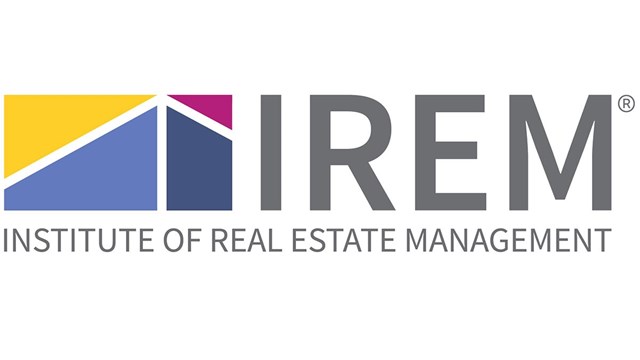New York is one of the most diverse cities on the face of the earth. Its huddled masses yearning to breathe free include immigrants from places completely unlike the Big Apple: Kazakhstan, Zimbabwe, Uruguay—even North Dakota. There are more Greeks in New York than in any other city except for Athens. There are more Jews in New York than there are in Israel. There are neighborhoods that are predominantly Russian, Korean, Arabic, Syrian, Albanian. Jackson Heights in Queens, for example, is home to residents hailing from more than 70 countries. It’s appropriate that the United Nations is headquartered here.
In any sizable community, people from a broad array of ethnic and sociological backgrounds live in close proximity, sometimes under the same co-op roof. Managing a co-op or condo that’s home to a diverse population poses some distinct challenges—and offers profound rewards for administrators and residents alike.
What is Diversity?
The word diversity has come to be shorthand for racial differences, but true diversity extends far beyond that narrow definition.
“As important as it is to have women executives and people of all races in our neighborhoods, diversity is way, way bigger than that,” says diversity expert Tom Atlee of the Co-Intelligence Institute, a non-profit organization that strives to promote diversity. “Our use of the word ‘diversity’ primarily to address issues of racism, classism, sexism, and other oppressive 'isms' has blinded us to the fact that diversity is a vast fact of life, deeply embedded not only in humanity but in natural systems and in the very fabric of the universe.”
In more grounded terms, diversity indicates differences of all kinds. A building might be diverse because it has many people of color living there; it may be diverse because there are Orthodox Jews in apartments two doors down from dutiful Muslims; it may be diverse because there are a number of gays and bisexuals, or strong-minded libertarians, or radical communists, or artists; it may be diverse because there are elderly people on fixed incomes living side-by-side with 23-year-old hedge fund managers. The important point: any difference, no matter how visible or seemingly inconsequential, contributes to the diversity of a building.
“Diversity is difference,” Atlee explains. “It is a natural phenomenon, intimately related to uniqueness and identity. There is a rich world of discovery awaiting us when we are ready to fully encounter our diversity. But first we have to lift our heads above the bustle around us and look at the big picture.”
Board members are property managers are in a position to do just that. What’s more, to succeed at their jobs, they have to.
The Challenges of Our Differences
With so many different kinds of people sharing common areas—literally living under one roof—good managers must be attuned to differences of all kinds.
“One of the biggest challenges is adapting to the needs of particular groups in a building,” says Steve Elbaz, president of Esquire Management Corp. in Manhattan. 'Particular groups,' of course, can mean all kinds of different things.
Ethnicity and country of origin is one example. “Brighton Beach is predominantly Russian,” he says. “The management company has to have a translator who speaks Russian, and building literature should be available in Russian.”
In a city as polyglot as New York, this is not limited to Brighton Beach, or to the Russian language. “Language is a challenge,” Elbaz says. “Most management offices have the ability to speak three, four or five languages—English, Spanish, Russian, Korean, Chinese—although there always seems to be one we don’t know.”
Another way people can be different: religion. “In the Midwood section of Brooklyn, there is a high number of Orthodox Jewish residents,” says Elbaz. “In buildings there, we have elevators programmed as Sabbath elevators—they open and close on every floor automatically. This is because on the Sabbath, they are not allowed to push the buttons.”
And then there are less obvious examples of diversity. “We have a building in Inwood that’s a Broadway shows and artists building. Maybe three-quarters of the building is involved in the performing arts,” he says. “We’ve had board meetings there on Monday night, because that’s the only night Broadway is dark.”
It's All About the Money
Of course, diversity is not limited to ethnicity, race, religion, or Actors Equity membership. Often it's about socioeconomics.
One building managed by Ralph Westerhoff, the president of BrickWork Management, a company that specializes in smaller co-ops and condos, “was a former squat that over time became an owner-operated co-op. People bought apartments from the city in 1978 for something like $900. An apartment sold two years ago for just under $1 million.” Westerhoff’s challenge lies in the fact that the mentality of the one-time squatters has done a 180 degree turn. “These are people who are pretty much against 'The Man,' and I have to explain to them that they are The Man—that if they’re fighting against anyone, it’s against themselves.”
This is a sort of diversity not often seen outside of the Five Boroughs.
“You have a building where you have many seniors who are retired and on a fixed income,” says Westerhoff. “They tend to be opposed to anything that would require an assessment, because they can’t afford it. This is versus younger people, newly married, who have more disposable income, and want to add amenities. It happens all the time.”
Indeed, in the current, tumultuous financial climate, the clash between incomes—which often plays out as a clash between the old and the young—is probably the biggest challenge any board member or property manager faces right now. Every attempt to maintain the building—a fresh coat of paint in the hallway, a new roof, replacement of the washing machines—threatens to escalate into a war between the tax brackets. Good managers understand this, and act accordingly.
Diversity Strategies
But what exactly does it mean to 'act accordingly' when you have so many different kinds of people, some with radically different needs, in the same living space?
“Ultimately, the creative use of diversity involves having some kind of common ground to stand on while exploring difficult differences,” says Atlee. “One of the most dependable forms of common ground is what I sometimes call our ‘core commons’--that place in all of us that is rooted in our shared humanity, our shared aliveness, our shared spirit.”
In the case of co-ops and condos, that common ground is literal. Everyone living in a building—from whatever ethnicity or age bracket—has a vested interest in having the building function well. The motive for cooperation is inherent in the living arrangement.
“Nothing can replace really listening to each other—hearing each other's stories, thoughts and feelings—in the faith that we are all trying to do what makes sense to us, at some level, and that we can ultimately understand each other's diverse ways of making sense,” Atlee says. First and foremost, boards and managers must listen to the needs of the various groups, in order to understand their needs and respond to them.
One frequent problem in diverse buildings is that Group X “wants their cultures and customs to prevail over how a co-op or condo operates,” as Elbaz puts it. Just as an Orthodox Jew would become frustrated by an elevator that required the pushing of buttons on Saturday, so a non-observant resident of that building might be annoyed that the elevator has to stop on every floor on Saturdays because of someone else’s religious observance.
Sometimes, the solution to this issue is simply to educate residents on the needs of a certain group—that it is a custom to not wear shoes in the house, for example. This can go a long way toward assuaging the annoyance a resident might feel about always seeing his neighbor's family's shoes lined up in their shared vestibule.
Sometimes, the education revolves around the finer points of living in a cooperative building. Westerhoff, who was once a consultant, treats all his clients as if he is still consulting for them. “We don’t talk down to people. We get people to understand best practices, and what’s the best for their particular situation.”
Elbaz agrees that “one of the most important things is education. A board should never assume that a unit owner understands how a co-op or condo operates.” Although the papers are gone over at the closing, the fast-and-furious nature of that particular transaction does not make for quality time to pore over documents—documents that may be written in a language the new owner does not fully comprehend. “Very few people take the time to read the documents,” says Elbaz.
It may not be an issue of flagrant disregard for certain house rules as much as ignorance that those house rules exist in the first place. A healthy part of the job, then, is teaching people how to live in cooperative housing: or in other words, reinforcing the customs, rules and policies of the building.
This cuts both ways. “Tolerance,” Elbaz says simply. “Boards, pick your fights. Don’t fight for the sake of fighting. If someone is doing nuclear testing with radiation in the building, do something about it. If shoes are in the hallway—that’s against the rules, but it's not the end of the world.”
For all the challenges, living in a diverse community is an enriching experience for everyone involved. The more we come together and understand one another the greater the chance for peace—not just in the co-op laundry room, but everywhere.
“Diversity, like fire and genius, can be problematic,” Atlee says. “And like fire and genius, diversity has creative power we can use to make life better.”
Greg Olear is a freelance writer and a frequent contributor to The Cooperator.










Leave a Comment